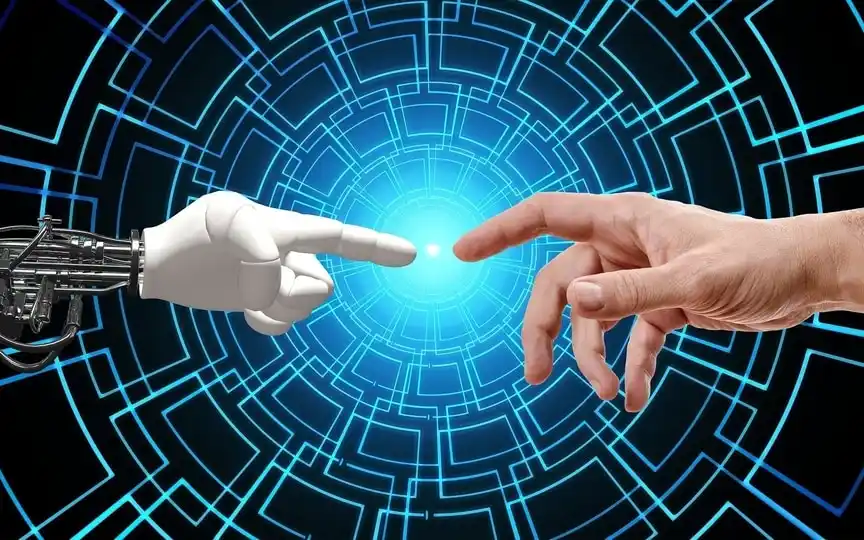IIT researchers create marine robot for live underwater monitoring, minimizing danger to human life
A team of researchers from IIT Mandi and Palakkad have created a marine robot that can address immediate issues in real-time, cutting down on maintenance expenses and the risk of fatalities during underwater operations.
The research, partly funded by the Naval Research Board (NRB) of Defense Research and Development Organization (DRDO), has been published in two journals – Journal of Intelligent and Robotic Systems and Ocean Engineering.
The state-of-the-art robot has been developed for careful underwater monitoring and inspections, promising greater efficiency, minimized risks and potential cost savings, the researchers said.
About 71 percent of the earth’s surface is covered by water, and the oceans contain about 96.5 percent of the earth’s water, where only a small percentage of the seabed and the underwater ecosystem are known to man.
“As understood from history, the interior of the ocean has been observed mainly by instruments launched from research vessels,” Jagadeesh Kadiyam, associate professor at the Center for Artificial Intelligence and Robotics, IIT Mandi, told PTI.
Kadiyam, co-author of the study, said typical ship cruises lasted a month or two, making detailed monitoring of the oceans limited.
“It’s often said that ocean variables don’t wait for a ship to come in to take measurements,” he noted.
“This problem of undersampling and the relatively high cost of these observation platforms call for technologies that could provide longer observation times at lower cost due to spatial and temporal density,” Kadiyam said.
“Similarly, infrastructure safety is a global concern due to aging dams and increased environmental stresses, necessitating more sophisticated inspection methods. Traditional inspection methods often involve human divers, which can be risky, time-consuming and expensive,” he said.
“Integrating marine robots into dam inspection procedures provides a safer, more cost-effective and more technologically advanced solution,” he added.
Kadiyam explained that the recent open water tank field tests represent a significant advance in the mature development of underwater vehicle technology.
“Our research focuses on underwater vehicle prototype development and performance studies for intervention and inspection applications. The new framework has been designed and deployed for various missions in oceans and inland waters,” he said.
Several simulations and experimental results have demonstrated the system’s capabilities in the presence of external disturbances such as water currents and varying payloads, the professor said.
The number of underwater structures is constantly increasing due to the introduction of new technologies and the rapid expansion of existing defense or civil infrastructure. It is therefore essential to routinely check, maintain and repair these structures.
In the past, underwater work was performed by divers, which had long-term health effects, but now underwater vehicles can be used to reduce human activity.
IIT-Palakkad Professor Santhakumar Mohan highlighted the challenges faced by researchers in developing marine robots. “From a research point of view, the marine robotics community faces numerous challenges due to the uncertain water environment and distractions. Underwater communication is still tricky because it mainly depends on acoustics because it is difficult for radio waves to pass through the water medium. In a narrow area, the vehicle component costs are also high,” said Mohan. “Other issues include waterproofing, the choice of non-corrosive materials, and high-pressure operations under water. That’s why marine robotic technology takes time to mature, unlike land-based and airborne vehicles. Our research focuses on systems and We design advanced controls to increase robot accuracy, precision, efficiency, and performance,” he added.
Various fixed actuators or thrusters are commercially available in the market, but surprisingly no optimized thruster assembly is available for a specific application so far. The location and arrangement of the propellers and the number of propellers can change the overall performance of the vehicle.
“Our research provides valuable information on choosing a specific configuration based on the mission in the presence of unknown underwater disturbances. The test vehicle prototype has been developed and rigorously tested through simulations and real-time experiments to demonstrate its effectiveness in various underwater operations. “The deployment of these vehicles can play a crucial role in various applications such as hydropower infrastructure inspection (inspection of water structures ), in environmental monitoring of water bodies (early detection of environmental problems) and in search and rescue operations,” Mohan said.
Also read these top stories today:
Headed by Carl Pei, Nothing is launching a mid-range smartphone, the Nothing Phone 2a in India on March 5th! This article has some interesting details. Check it out here. If you enjoyed reading this article, please share it with your friends and family.
Teasing its design and AI features, Moto says the Motorola X50 Ultra will launch soon. It is touted to compete with the Samsung Galaxy S24. This article has some interesting details. Check it out here. If you enjoyed reading this article, please share it with your friends and family.
USA vs China! US reevaluates privacy policies over Chinese tech, focuses on AI risks. President Biden’s recent actions are aimed at limiting the flow of sensitive information abroad to prevent espionage and extortion. Read all about it here. Was it interesting? Go ahead and share it with everyone you know.




